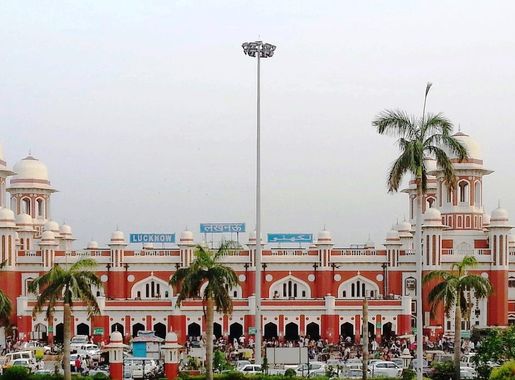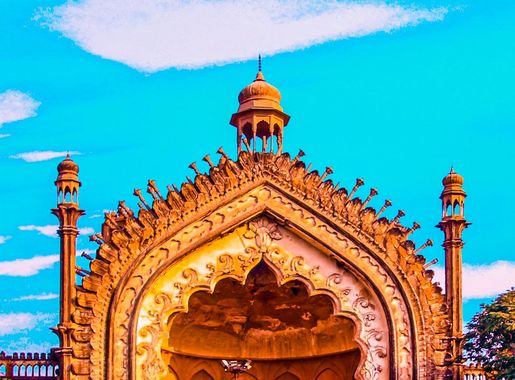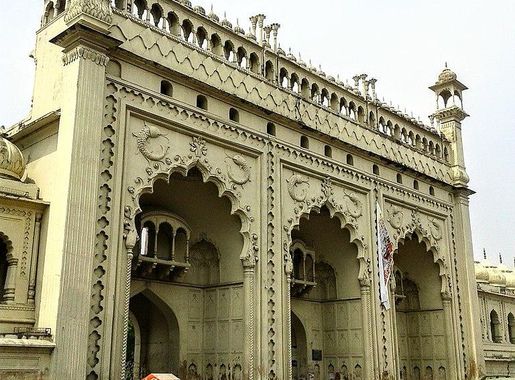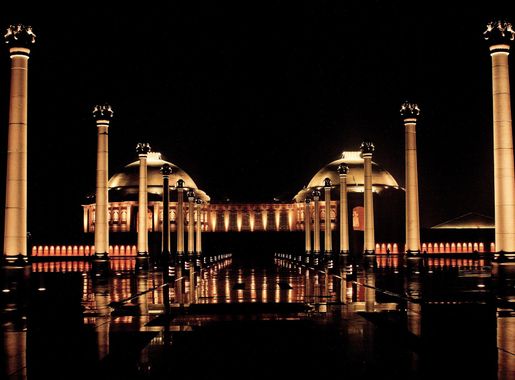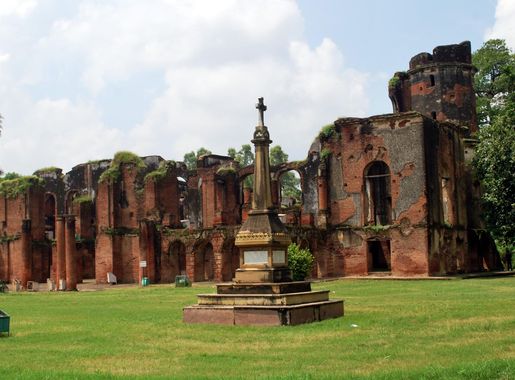
Charbagh: The Gateway to Lucknow's Rich Heritage
Explore Charbagh in Lucknow, a blend of historical elegance and modern vibrancy, where Mughal architecture meets bustling markets and delectable Awadhi cuisine.
Charbagh, a vibrant neighbourhood in Lucknow, India, serves as a captivating introduction to the city's rich cultural tapestry. This area is renowned for its impressive railway station, which is considered one of the most beautiful in the country. The architecture of the station itself is an amalgamation of Mughal and Western influences, featuring intricate designs and grandiose structures that transport visitors back in time. The surrounding streets of Charbagh buzz with activity, offering a delightful mix of traditional shops, modern establishments, and quaint eateries. Visitors can immerse themselves in the local culture by exploring the bustling markets, where they will find everything from traditional Chikan embroidery to aromatic spices. The area is a haven for food lovers, with a plethora of eateries serving delectable Awadhi cuisine, including kebabs, biryanis, and sweets. A short walk from the railway station leads to several historical monuments and parks. The Kaiserbagh Palace Complex, with its lush gardens and historic architecture, provides a serene escape from the urban hustle. Additionally, the neighbourhood's strategic location makes it an excellent base for exploring other parts of Lucknow, including the iconic Bara Imambara and Rumi Darwaza, both of which are just a short drive away.
Local tips in Charbagh
- Visit the Charbagh Railway Station early in the morning to avoid crowds and get the best photographs.
- Try local street food like kebabs and biryani from the nearby eateries for an authentic culinary experience.
- Wear comfortable walking shoes as you will likely spend a lot of time exploring the local markets and historical sites.
- Carry a bottle of water and some cash as not all vendors accept cards or digital payments.
Charbagh: The Gateway to Lucknow's Rich Heritage
Charbagh, a vibrant neighbourhood in Lucknow, India, serves as a captivating introduction to the city's rich cultural tapestry. This area is renowned for its impressive railway station, which is considered one of the most beautiful in the country. The architecture of the station itself is an amalgamation of Mughal and Western influences, featuring intricate designs and grandiose structures that transport visitors back in time. The surrounding streets of Charbagh buzz with activity, offering a delightful mix of traditional shops, modern establishments, and quaint eateries. Visitors can immerse themselves in the local culture by exploring the bustling markets, where they will find everything from traditional Chikan embroidery to aromatic spices. The area is a haven for food lovers, with a plethora of eateries serving delectable Awadhi cuisine, including kebabs, biryanis, and sweets. A short walk from the railway station leads to several historical monuments and parks. The Kaiserbagh Palace Complex, with its lush gardens and historic architecture, provides a serene escape from the urban hustle. Additionally, the neighbourhood's strategic location makes it an excellent base for exploring other parts of Lucknow, including the iconic Bara Imambara and Rumi Darwaza, both of which are just a short drive away.
Iconic landmarks you can’t miss
Dr. Babasaheb Ambedkar Memorial Park
Explore the serene landscapes and historical significance of Dr. Babasaheb Ambedkar Memorial Park in Lucknow, a tribute to equality and justice.

The Residency, Lucknow
Experience the rich history of Lucknow at The Residency, a UNESCO World Heritage site showcasing colonial architecture and the legacy of the 1857 uprising.
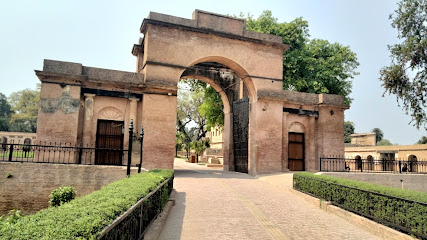
Chota Imambara
Discover the architectural marvel of Chota Imambara, a historical gem in Lucknow showcasing exquisite Mughal artistry and cultural heritage.

Sikandar Bagh
Explore the enchanting Sikandar Bagh, a historical gem in Lucknow, where lush gardens meet rich Mughal heritage and captivating tales of the past.
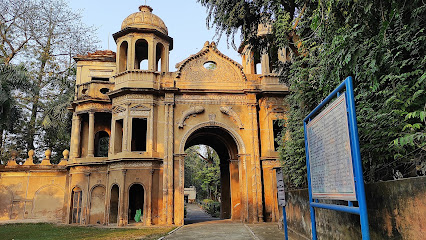
Safed Baradari
Experience the elegant beauty of Safed Baradari, a historical landmark in Lucknow, showcasing Mughal architecture and serene gardens.
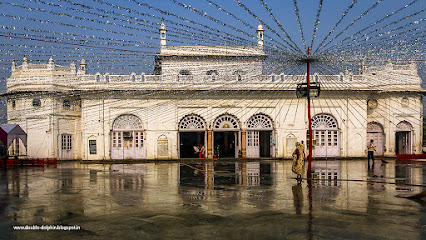
Satkhanda
Explore Satkhanda in Lucknow: a historical landmark showcasing unique architecture and rich cultural heritage.

Maharaja Bijli Pasi Quila
Discover the historic charm of Maharaja Bijli Pasi Quila, a serene fortress in Lucknow, rich with cultural heritage and stunning architecture.
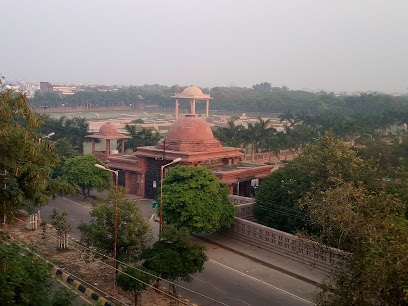
Chhatar Manzil
Explore Chhatar Manzil, a stunning heritage building in Lucknow that reflects the grandeur of the Awadhi era with its intricate designs and lush gardens.
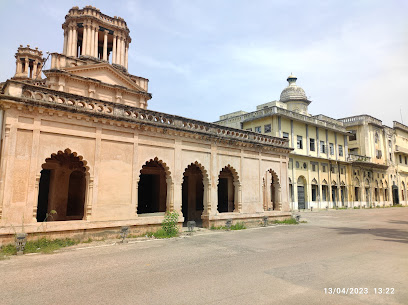
Shaheed Smarak
Explore Shaheed Smarak, a serene monument in Lucknow honoring India's freedom fighters amidst lush gardens and rich history.
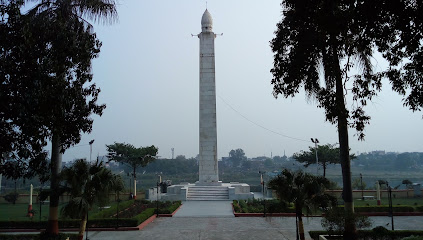
Dilkusha Kothi
Discover the historical elegance of Dilkusha Kothi in Lucknow, a serene retreat reflecting the rich heritage of the Nawabs of Awadh.
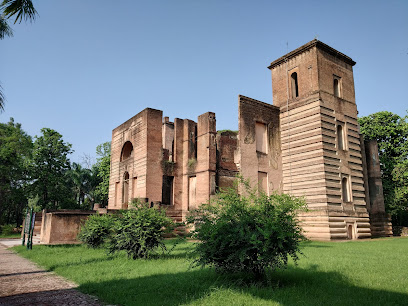
LANGDA FATAK
Discover the enchanting Langda Faatak in Lucknow—a historical landmark that captures the essence of Uttar Pradesh's rich cultural heritage.
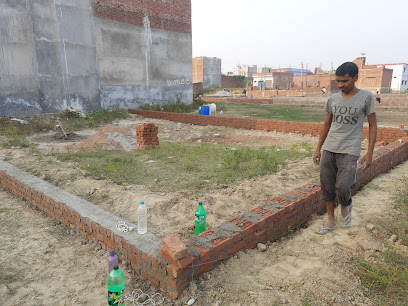
Musa Bagh
Discover the historical charm of Musa Bagh, a serene landmark in Lucknow, where lush gardens meet majestic Mughal architecture.

Maqbara (Tomb) of Saadat Ali Khan
Discover the enchanting Maqbara of Saadat Ali Khan in Lucknow, a historical marvel showcasing exquisite Mughal architecture and rich cultural heritage.
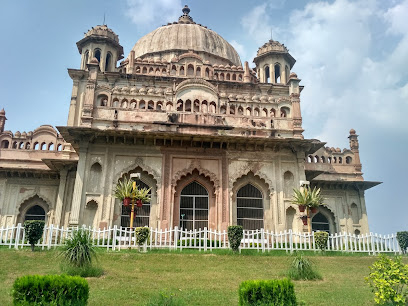
Dargah Va Masjid Khamman Peer Baba, Charbagh
Explore the Dargah Va Masjid Khamman Peer Baba in Lucknow, a captivating blend of spirituality and architectural beauty, steeped in rich history.
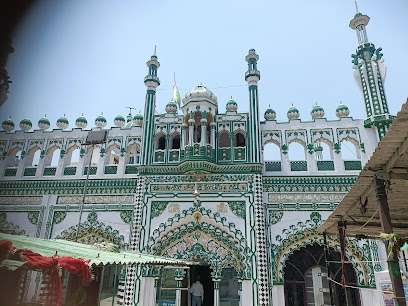
Begum Hazrat Mahal Park
Discover tranquility and historical beauty at Begum Hazrat Mahal Park, a serene oasis in the heart of Lucknow, perfect for leisurely strolls and picnics.

Unmissable attractions to see
Bada Imambara, West Lucknow
Explore the breathtaking Bada Imambara in Lucknow, a historical landmark showcasing exquisite Indo-Islamic architecture and rich cultural heritage.
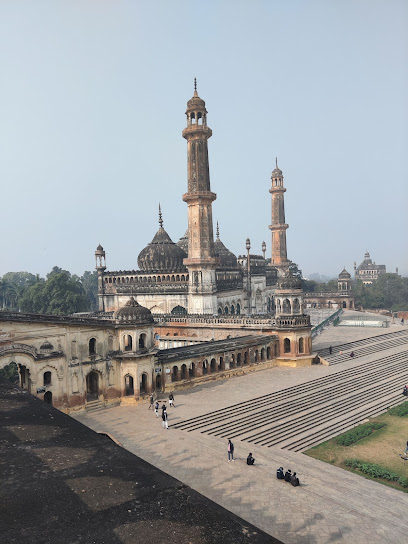
Nawab Wajid Ali Shah Zoological Garden
Visit Nawab Wajid Ali Shah Zoological Garden in Lucknow for a unique blend of wildlife conservation, historical charm, and family-friendly fun.

Dr. Babasaheb Ambedkar Memorial Park
Explore Dr. Babasaheb Ambedkar Memorial Park in Lucknow, a serene tribute blending nature, history, and stunning architecture for a memorable visit.
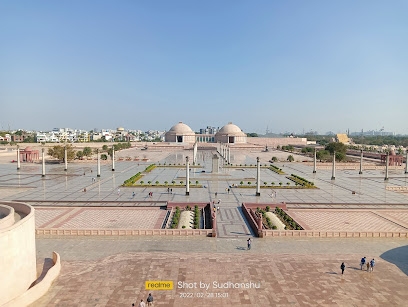
State Museum Lucknow
Explore the State Museum Lucknow, a cultural gem showcasing the rich history and art of Uttar Pradesh through captivating exhibits and artifacts.
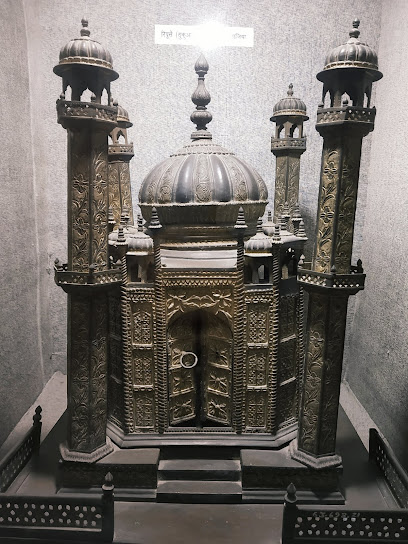
Sikandar Bagh
Explore the historical beauty of Sikandar Bagh, a lush garden in Lucknow rich in history and natural wonders, ideal for every traveler seeking tranquility.
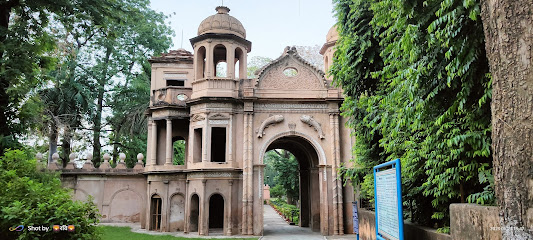
Chhatar Manzil
Explore the elegance of Chhatar Manzil, a heritage site in Lucknow, showcasing a blend of Mughal and British architecture amidst serene gardens.
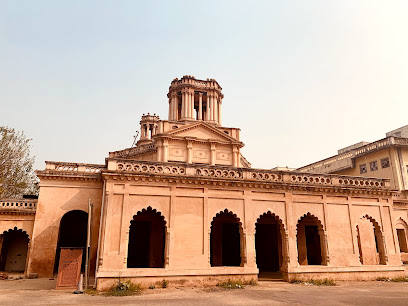
Charbag Garden
Explore the serene beauty and historical charm of Charbag Garden in Lucknow, a lush retreat perfect for nature lovers and history enthusiasts alike.
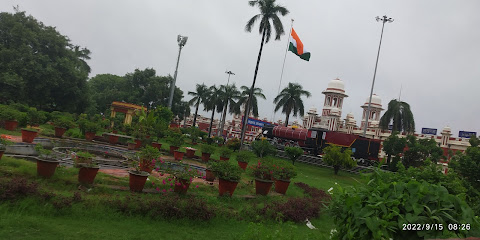
Blue Train Engine
Experience the nostalgia of India's railway heritage at Lucknow's Blue Train Engine, a vibrant tribute to steam travel amidst lush surroundings.
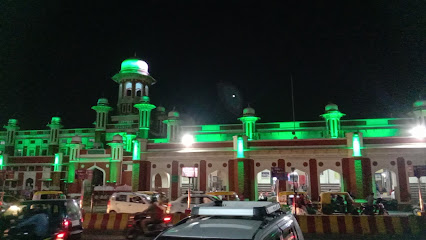
Mohan Ola Taxi
Discover the charm of Lucknow with Mohan Ola Taxi, your reliable transport partner for exploring the city's rich culture and heritage.
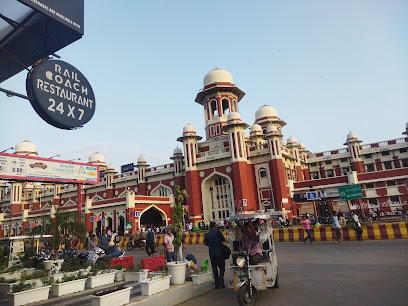
Mau Aima to lucknow charbagh
Experience the cultural richness and architectural beauty on the journey from Mau Aima to Lucknow Charbagh, a key highlight in Uttar Pradesh.

Essential places to dine
Milan~A Speciality Restaurant
Experience the exquisite flavors of Awadhi cuisine at Milan - where every meal tells a story.
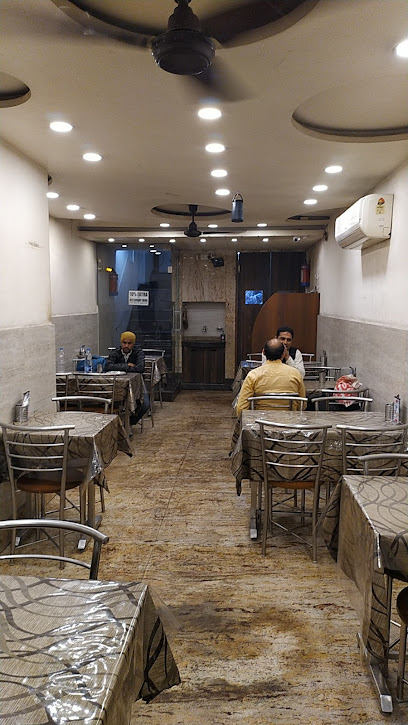
Balaji Bhojnalaya
Discover the rich flavors of North Indian and Chinese cuisine at Balaji Bhojnalaya in Lucknow – a must-visit restaurant for every food lover.
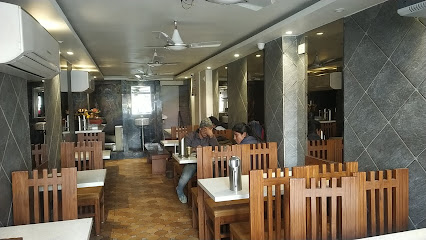
The Pacific Hut - Family Restaurants in Lucknow
Discover the vibrant flavors of fast food at The Pacific Hut in Lucknow – where family dining meets casual comfort.
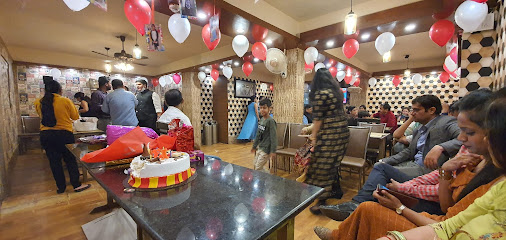
Maharaja Restaurant
Experience authentic North Indian cuisine at Maharaja Restaurant in Lucknow – where every dish tells a story.
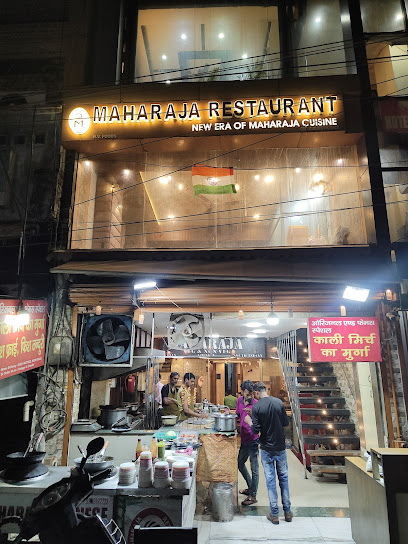
Comesum Lucknow
Experience authentic North Indian cuisine at Comesum Lucknow - perfect for travelers seeking delicious meals on-the-go.
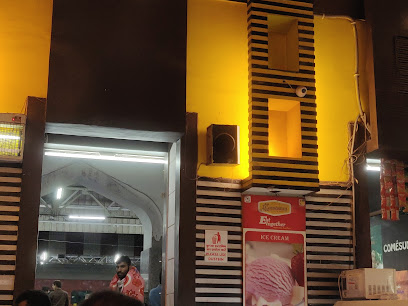
Tava Restaurant
Discover the essence of North Indian cuisine at Tava Restaurant in Lucknow - where tradition meets taste.
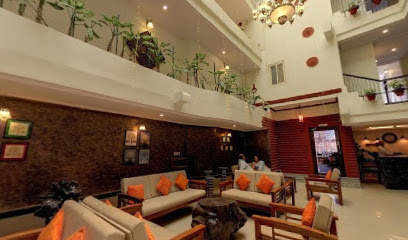
Raj Luxmi
Discover Raj Luxmi in Lucknow: A charming Indian sweets shop offering delicious vegetarian delights in a welcoming atmosphere.
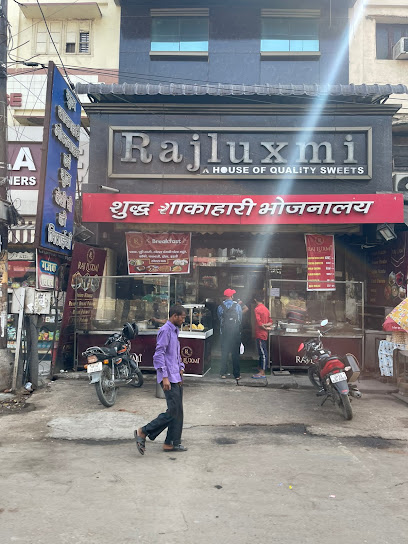
Jai Bharat Restaurant
Experience the essence of Lucknow through its diverse culinary offerings at Jai Bharat Restaurant—where North Indian meets Chinese flavors.
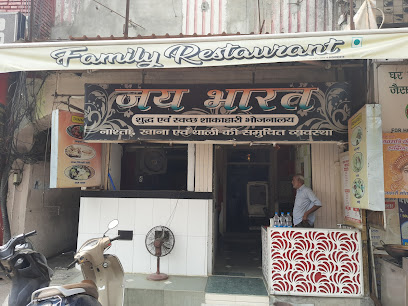
Punjabi Tadka (Charbagh)
Experience authentic North Indian flavors at Punjabi Tadka in Charbagh, Lucknow—where every dish tells a story.
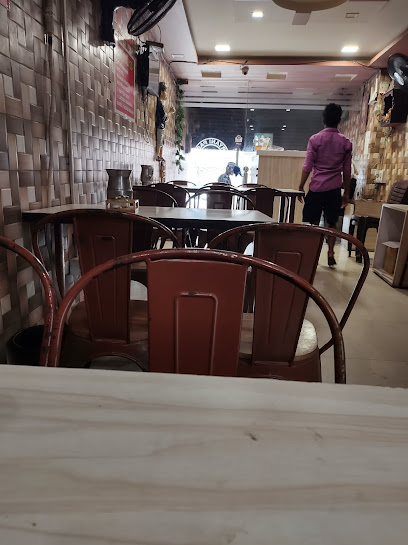
Punjabi Dhaba
Savor authentic Punjabi dishes at Punjabi Dhaba in Lucknow - a culinary experience rich with flavor and tradition.
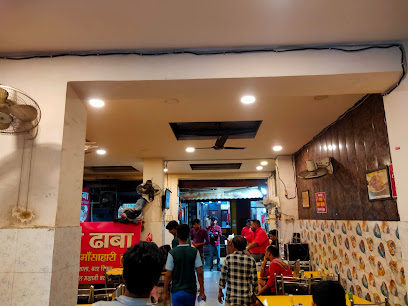
Markets, malls and hidden boutiques
V-Mart - Durgapuri - Lucknow
Experience vibrant fashion at V-Mart in Lucknow, your ultimate destination for trendy clothing and unique accessories.
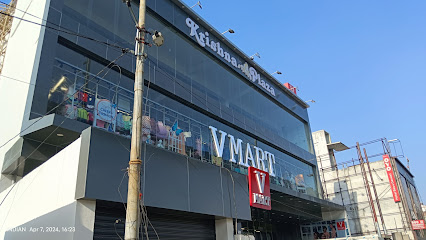
Footpath Bazar
Discover the charm of Footpath Bazar in Lucknow, where shopping meets culture, and local flavors abound in a vibrant market atmosphere.

chikan palace
Discover the exquisite craftsmanship of Chikan embroidery at Chikan Palace, the heart of traditional Lucknow fashion.
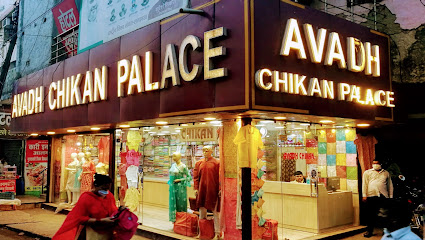
Lakhnau charbag
Discover the flavors and vibrant culture of Lucknow at Charbagh Market, a local grocery store rich with tradition and lively shopping experiences.
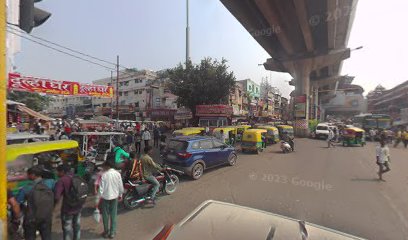
Gift Shop
Explore a delightful gift shop in Lucknow, offering unique souvenirs and local handicrafts that embody the city's rich cultural heritage.
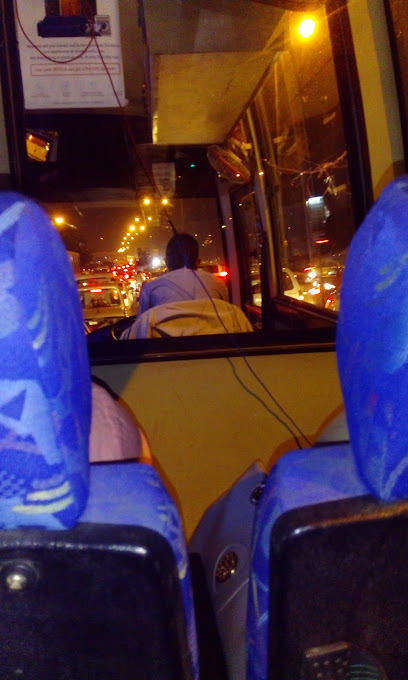
Charbag Lucknow
Explore the vibrant fashion scene of Charbag Lucknow, where traditional elegance meets contemporary style in a shopper's paradise.
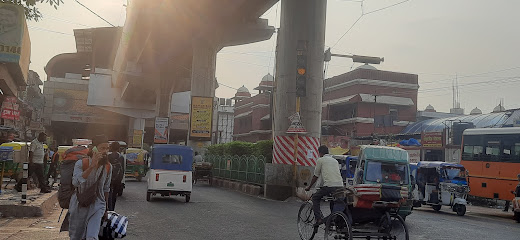
Mini Shoppe
Explore Mini Shoppe in Lucknow for unique gifts, delightful toys, and sporting goods in a vibrant shopping atmosphere.
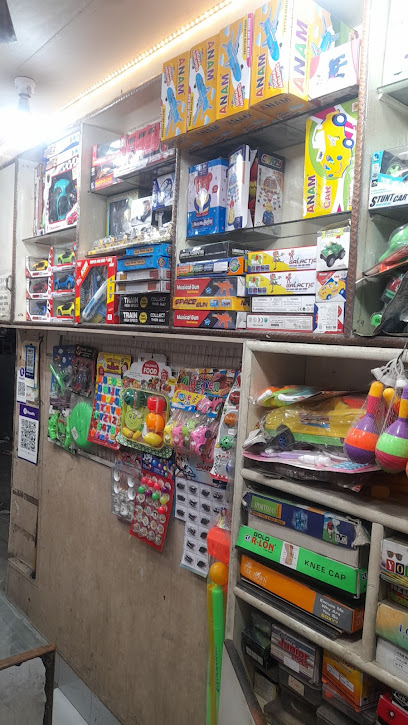
Royal The Model Shop
Explore Royal The Model Shop in Lucknow for a diverse range of models, collectibles, and creative inspiration for hobbyists of all ages.

S K Trading Company
Discover the essence of Lucknow's fashion at S K Trading Company - a premier clothing store offering a blend of tradition and modernity.
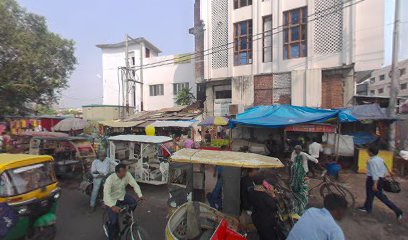
Rakesh Shop
Discover unique gifts and local treasures at Rakesh Shop in Charbagh, Lucknow, where culture meets craftsmanship.
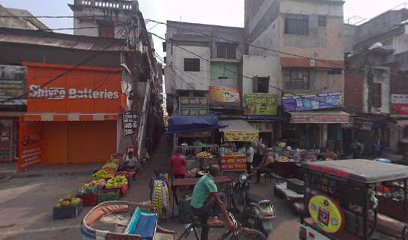
Essential bars & hidden hideouts
The Pacific Hut - Family Restaurants in Lucknow
Discover The Pacific Hut in Lucknow, where family-friendly dining meets delicious fast food in a vibrant and welcoming atmosphere.
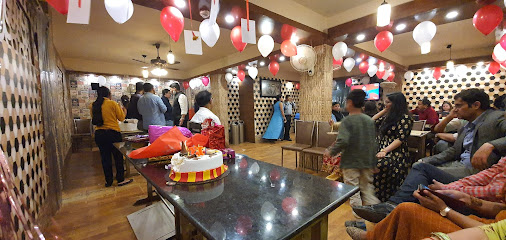
Crystal Bar
Discover the lively atmosphere and affordable drinks at Crystal Bar, a cornerstone of Lucknow's nightlife, perfect for tourists seeking fun and relaxation.
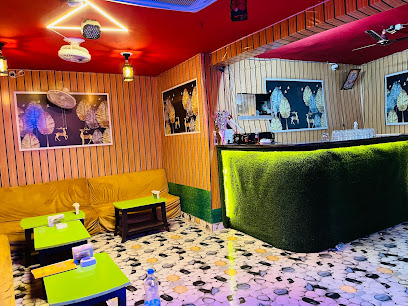
Tava Restaurant
Experience the rich flavors of North Indian cuisine at Tava Restaurant, a culinary treasure in the heart of Lucknow.
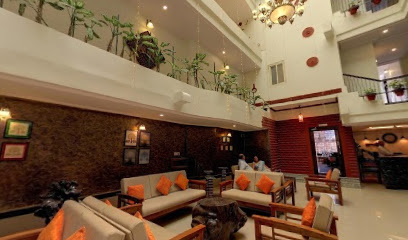
Badshah The Lounge & Restaurant
Discover a perfect blend of traditional and modern dining at Badshah The Lounge & Restaurant in Lucknow.
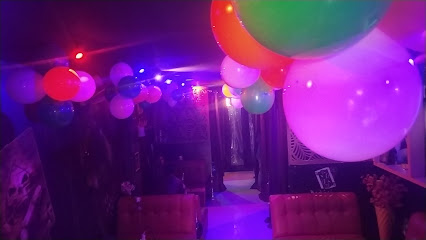
Just Madira Bar
Discover the lively atmosphere and diverse drink selection at Just Madira Bar in Lucknow, a perfect spot for relaxation and socializing.
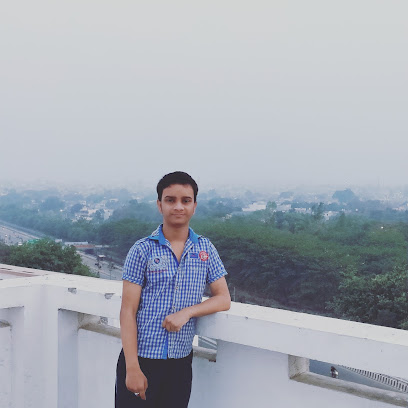
Beer Shop
Explore the vibrant beer scene in Lucknow at the Beer Shop, where local flavors and a friendly atmosphere come together.
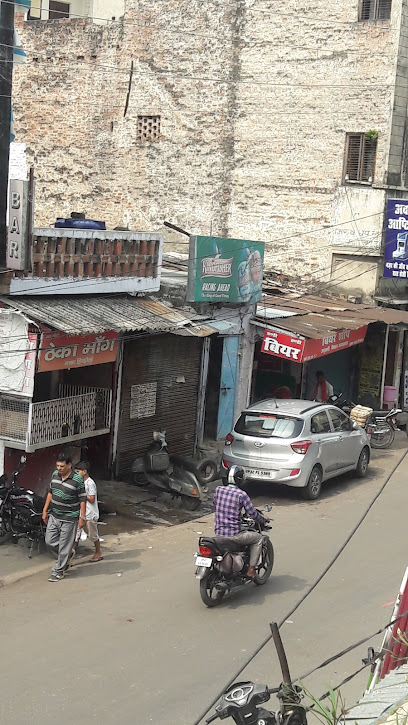
Fresh Rooms LUXURY Travellers's Lounge
Experience unparalleled luxury and relaxation at Fresh Rooms LUXURY Travellers' Lounge, the perfect retreat for travelers in Lucknow.
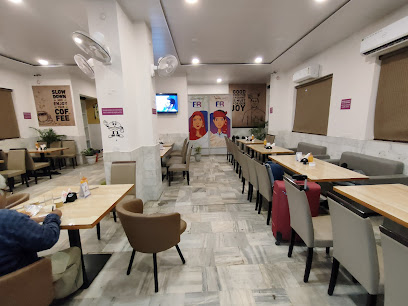
House Of Wine
Discover the exquisite charm of the House of Wine in Lucknow, where fine wines and crafted cocktails meet a warm, inviting atmosphere.
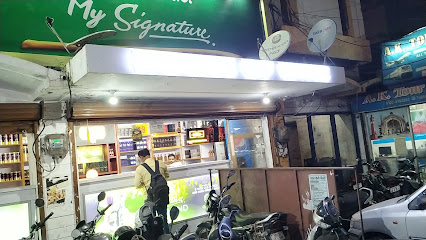
Theka Desi Sharab
Discover the charm of Lucknow at Theka Desi Sharab, where exquisite wines meet a cozy atmosphere in the heart of the city.
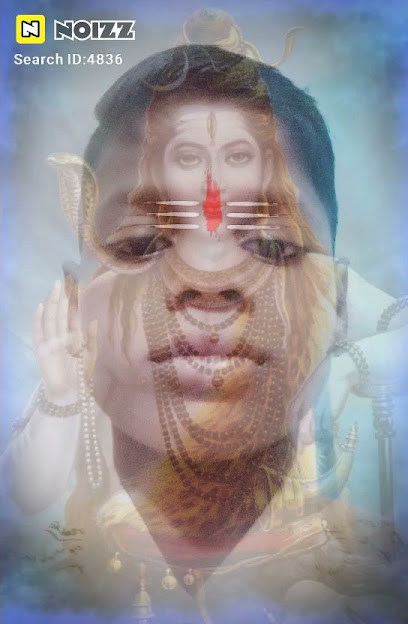
CG BAR AND RESTAURANT THANDI BEER WALE
Discover the lively spirit of Lucknow at CG Bar and Restaurant Thandi Beer Wale, where drinks and good company come together.
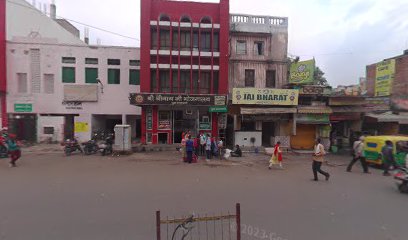
Local Phrases
-
- Helloनमस्कार
[namaskār] - Goodbyeअलविदा
[alavidā] - Yesहाँ
[hāṁ] - Noनहीं
[nahīṁ] - Please/You're welcomeकृपया
[kṛpaya] - Thank youधन्यवाद
[dhanyavād] - Excuse me/Sorryमाफ़ कीजिए
[māf kījie] - How are you?आप कैसे हैं?
[āp kaise haiṁ?] - Fine. And you?ठीक हूँ। आप?
[ṭhīk hū̃. āp?] - Do you speak English?क्या आप अंग्रेज़ी बोलते हैं?
[kyā āp aṅgrezī bolte haiṁ?] - I don't understandमुझे समझ में नहीं आया
[mujhe samajh meṁ nahīṁ āyā]
- Helloनमस्कार
-
- I'd like to see the menu, pleaseकृपया मेनू दिखाएं
[kṛpaya menū dikhāeṁ] - I don't eat meatमैं मांस नहीं खाता/खाती
[maiṁ māns nahīṁ khātā/khātī] - Cheers!चियर्स!
[ciyars!] - I would like to pay, pleaseकृपया मैं भुगतान करना चाहूँ
[kṛpaya maiṁ bhugatān karnā cāhū̃]
- I'd like to see the menu, pleaseकृपया मेनू दिखाएं
-
- Help!मदद!
[madad!] - Go away!चले जाओ!
[cale jāo!] - Call the Police!पुलिस को बुलाओ!
[pulis ko bulāo!] - Call a doctor!डॉक्टर को बुलाओ!
[ḍākṭar ko bulāo!] - I'm lostमैं खो गया/गई हूँ
[maiṁ kho gayā/gaī hū̃] - I'm illमुझे बीमारी है
[mujhe bīmārī hai]
- Help!मदद!
-
- I'd like to buy...मैं ... खरीदना चाहूँ
[maiṁ ... kharīdnā cāhū̃] - I'm just lookingमैं बस देख रहा/रही हूँ
[maiṁ bas dekh rahā/rahī hū̃] - How much is it?यह कितने का है?
[yah kitne kā hai?] - That's too expensiveयह बहुत महंगा है
[yah bahut mahngā hai] - Can you lower the price?क्या आप कीमत कम कर सकते हैं?
[kyā āp kīmat kam kar sakte haiṁ?]
- I'd like to buy...मैं ... खरीदना चाहूँ
-
- What time is it?अभी कितने बजे हैं?
[abhī kitne baje haiṁ?] - It's one o'clockएक बजे हैं
[ek baje haiṁ] - Half past (10)दस बजकर पाँच मिनट
[das bajkar pā̃c minaṭ] - Morningसुबह
[subah] - Afternoonदोपहर
[dopahar] - Eveningशाम
[śām] - Yesterdayकल
[kal] - Todayआज
[āj] - Tomorrowकल
[kal] - 1एक
[ek] - 2दो
[do] - 3तीन
[tīn] - 4चार
[cār] - 5पांच
[pā̃c] - 6छह
[chhah] - 7सात
[sāt] - 8आठ
[āṭh] - 9नौ
[nau] - 10दस
[das]
- What time is it?अभी कितने बजे हैं?
-
- Where's a/the...?...कहाँ है?
[...kahā̃ hai?] - What's the address?पता क्या है?
[patā kyā hai?] - Can you show me (on the map)?क्या आप मुझे दिखा सकते हैं (नक्शे पर)?
[kyā āp mujhe dikhā sakte haiṁ (nakśe par)?] - When's the next (bus)?अगली (बस) कब है?
[aglī (bas) kab hai?] - A ticket (to ....)एक टिकट (.... के लिए)
[ek ṭikaṭ (.... ke lie)]
- Where's a/the...?...कहाँ है?
History of Charbagh
-
Charbagh is renowned for the iconic Charbagh Railway Station, which was built in the early 20th century during the British Raj. Designed by British architect Sir William Emerson, this station is a stunning example of Indo-Saracenic architecture, characterized by its ornate arches and intricate domes. The station played a crucial role in connecting Lucknow with major cities across India, facilitating trade and travel, and remains a significant landmark in the city.
-
During the Nawabi era in the 18th and 19th centuries, Charbagh emerged as a melting pot of diverse cultures. The Nawabs of Awadh, known for their patronage of the arts, significantly influenced the local architecture, cuisine, and music. This vibrant cultural exchange led to the development of unique local traditions, which are still celebrated in Charbagh today, particularly in its culinary offerings and annual festivals.
-
Charbagh witnessed significant events during the 1857 Sepoy Mutiny, which was a pivotal moment in India's struggle for independence. The area became a base for freedom fighters and saw intense military engagements. Although the mutiny was suppressed, it marked the beginning of a larger movement against British rule, with Charbagh serving as a historical witness to the socio-political changes that ensued in Lucknow and the broader region.
-
After India gained independence in 1947, Charbagh underwent substantial urban development. The area saw the establishment of educational institutions, commercial establishments, and improved infrastructure. This transformation played a vital role in accommodating the growing population and making Lucknow a bustling urban center. Charbagh now serves as a vital transit hub, linking various parts of the city and contributing to its economic growth.
-
Today, Charbagh stands as a bustling neighborhood that encapsulates the essence of Lucknow's rich heritage while embracing modernity. The area is home to a variety of shops, eateries, and cultural venues that reflect the city's historical legacy. Events celebrating Lucknow's traditional music, dance, and cuisine are frequently held here, making Charbagh a vibrant part of the city's cultural fabric.
Charbagh Essentials
-
Charbagh is well-connected to various parts of Lucknow. If you are arriving by train, the Charbagh Railway Station is a major hub and serves multiple routes across India. For those coming from the airport, Lucknow Airport is about 15 kilometers away, and you can hire a taxi or use ride-sharing apps to reach Charbagh. Local buses and auto-rickshaws also operate frequently from various neighborhoods in Lucknow.
-
Charbagh is easily navigable, with a mix of public transport options. The Charbagh Railway Station has a local bus stand, providing access to various routes across the city. Auto-rickshaws are a popular choice for short distances, while cycle-rickshaws offer a more traditional experience. Walking is also a good option in the less congested areas. For longer distances, consider using app-based taxi services.
-
Charbagh is generally safe for tourists; however, like any urban area, it is advisable to stay vigilant. Areas near the railway station can be busy and may attract petty crime such as pickpocketing. It is best to avoid isolated streets at night and to keep personal belongings secure. Always be cautious in crowded places.
-
In the event of an emergency, dial 100 for police assistance or 108 for ambulance services. Local hospitals and clinics are available, with the King George's Medical University being one of the prominent medical facilities nearby. Make sure to have travel insurance covering medical emergencies. For minor health concerns, pharmacies are accessible throughout Charbagh.
-
Fashion: Do dress modestly, especially when visiting religious sites. Avoid overly revealing clothing. Religion: Do respect local customs, especially during religious ceremonies. Public Transport: Do offer your seat to elderly passengers and women. Don't engage in loud conversations. Greetings: Do greet locals with a polite 'Namaste' or a handshake. Eating & Drinking: Do try local dishes like 'Tunday Kababi' and accept food offerings graciously. Don't refuse food, as it is considered impolite.
-
To experience Charbagh like a local, explore the small food stalls around the railway station for authentic street food. Visit the nearby markets for fresh produce and local handicrafts. Engage with locals to learn about their culture and history, and don't hesitate to ask for recommendations. For a unique experience, take a stroll along the nearby Gomti River, especially in the evening when the area is lively.
Trending Landmarks in Charbagh
-
Dr. Babasaheb Ambedkar Memorial Park
-
The Residency, Lucknow
-
Chota Imambara
-
Sikandar Bagh
-
Safed Baradari
-
Satkhanda
-
Maharaja Bijli Pasi Quila
-
Chhatar Manzil
-
Shaheed Smarak
-
Dilkusha Kothi
-
LANGDA FATAK
-
Musa Bagh
-
Maqbara (Tomb) of Saadat Ali Khan
-
Dargah Va Masjid Khamman Peer Baba, Charbagh
-
Begum Hazrat Mahal Park
Nearby Cities to Charbagh
-
Things To Do in Kanpur
-
Things To Do in Lumbini
-
Things To Do in Varanasi
-
Things To Do in Gwalior
-
Things To Do in Agra
-
Things To Do in Pokhara
-
Things To Do in Chitwan
-
Things To Do in Bandipur
-
Things To Do in Gorkha
-
Things To Do in Jabalpur
-
Things To Do in Delhi
-
Things To Do in Patna
-
Things To Do in Patan
-
Things To Do in Rishikesh
-
Things To Do in Ranthambore

